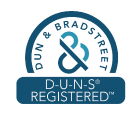Actively managing investments can often be difficult, time-consuming, and even confusing, especially for investors without the expertise or patience to track the markets daily.
That’s why many people turn to professional fund managers through collective investment schemes, commonly known as mutual funds.
While this approach saves time and provides access to expert management, it’s equally important to understand how these funds operate particularly in the two key variants: open-ended and closed-ended funds.
Knowing the difference between them helps you make smarter choices about returns, risks, and how to invest effectively — and even guides your first decision on which one to start with and why.
What they mean
An open-ended fund is a type of collective investment scheme that continuously creates and redeems units based on investor demand.
- Investors buy units directly from the fund manager and can redeem them at any time, at the current Net Asset Value (NAV).
- Because of this flexibility, open-ended funds are highly liquid.
Examples: Money Market Funds, Bond Funds, and Balanced Funds such as the Stanbic IBTC Bond Fund (SIBOND) or the ARM Money Market Fund.
A closed-ended fund, by contrast, issues a fixed number of units during its initial public offer and does not redeem them later.
- Afterward, the units are listed on the Nigerian Exchange (NGX) or FMDQ, where investors buy or sell through stockbrokers.
- The price of a closed-ended fund is driven by market demand and supply, not daily NAV.
Examples: The Nigerian Infrastructure Debt Fund (NIDF) and UPDC Real Estate Investment Trust (REIT).
- Chape Hill Denham is the fund manager for NIDF, while Stanbic IBTC Asset Management is the fund manager for UPDC REITF
Both offer diversification and professional management but differ in liquidity, risk, and the kind of returns they generate.
Let us look at what comes to you, when you invest and their specific risks
Returns: How to earn
Open-ended funds pay you from the interest or dividends earned on the assets they invest in.
- For example, when you put money in the Stanbic IBTC Bond Fund (SIBOND), your capital is pooled with others and invested in government and corporate bonds.
- Those bonds pay interest periodically, and that income is shared among investors.
So, if SIBOND earns 15–18% a year, your returns come in the form of cash payouts or are reinvested automatically, helping your money grow steadily through compounding.
Closed-ended funds, like the Nigerian Infrastructure Debt Fund (NIDF) or UPDC Real Estate Investment Trust (REIT), make you money differently.
Here, your earnings come from dividends, interest income, and potential capital gains.
- NIDF invests in infrastructure loans, paying investors from the interest earned on those projects
- UPDC REIT owns real estate that generates rent. That rent is distributed to investors as dividends.
In simple terms, open-ended funds make you money by earning interest regularly, while closed-ended funds pay you through dividends and long-term value growth.
One gives you an income you can touch; the other rewards you for giving your money time to work.
Given SEC weekly valuation report on collective investment scheme of October, the return ranges between 18% – 46%
Risk: What you should know before investing
These funds can help you make money, but they’re not risk-free, and the level of risk depends on what they invest in and how easy it is to access your money.
Open-ended funds fall across different risk levels.
- The lower risk funds such as money market open-ended funds are suitable for conservative investors who want steady returns with minimal swings.
- Because they hold short-term assets, they adjust quickly when interest rates change, keeping potential losses small.
- Higher-risk open-ended funds, such as equity mutual funds, buy shares of companies listed on the Nigerian Exchange (NGX).
- Funds like the Stanbic IBTC Nigerian Equity Fund or United Capital Equity Fund aim for long-term growth, but their value rises and falls with the stock market.
In good years, returns can climb above 25%, but during downturns, investors may see declines
For closed-ended funds, they carry market and liquidity risk.
You can’t withdraw directly from the fund; you have to sell your units on the NGX or FMDQ, and prices depend on demand.
- The NIDF delivers stable income from infrastructure loans but locks in capital for longer.
- The UPDC REIT pays solid real estate-backed dividends, though property values and rental income can fluctuate with the economy.
How to invest:
For Open-Ended Funds:
- You invest directly with a fund manager such as Stanbic IBTC Asset Management, ARM, FBNQuest, or United Capital.
- Minimum investment is usually between N1,000 and N10,000, and returns are paid based on daily NAV performance.
- Investors can start small and top up regularly. Funds like SIBOND or the United Capital Money Market Fund are suitable for income stability, emergency savings, or short-term plans.
For Closed-Ended Funds:
- You buy or sell units through licensed stockbrokers on the Nigerian Exchange (NGX) or FMDQ.
- Funds such as NIDF and UPDC REIT are ideal for those who can hold their investments for longer periods—three years or more—while earning higher yields and dividend distributions.
They also serve as inflation hedges because the assets (infrastructure and real estate) often appreciate over time.
A balanced investor can combine both: keep 60–70% in open-ended funds for liquidity and 30–40% in closed-ended funds for higher growth potential.


















